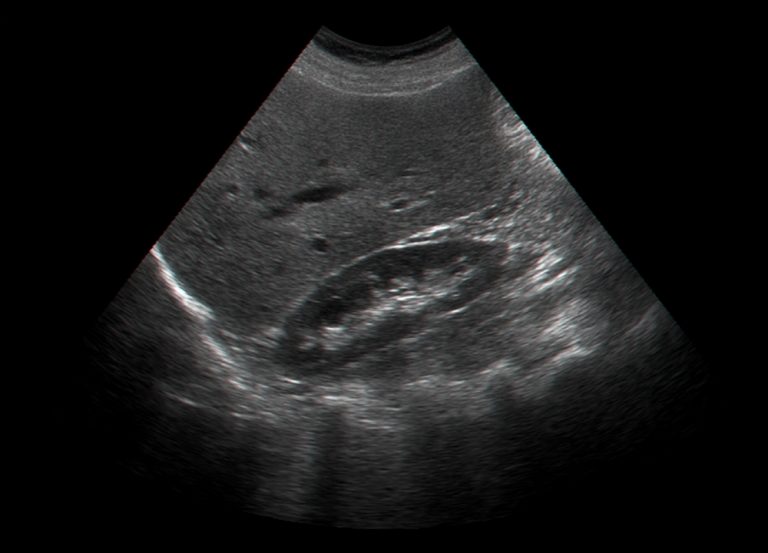The urinary tract ultrasound or US Urinary tract is the primary imaging modality in the investigation of the urinary tract symptoms in men and women. Below we discuss the most common urinary tract symptoms that patients seek medical advice.
Common Urologic Conditions in Both Men and Women
Incontinence
Total Incontinence
Total incontinence is defined as a constant or intermittent loss of urine without normal urination.
Stress Incontinence
Stress incontinence is defined as an involuntary loss of urine not caused by bladder contraction and is associated with activities such as coughing, sneezing, laughing, lifting, or exercise. Stress incontinence usually occurs in females and may be associated with multiple vaginal deliveries.
Urge Incontinence
Urge incontinence is the involuntary loss of urine associated with an overwhelming desire or need to urinate.
Overflow Incontinence
Overflow incontinence results from urine loss as a result of a failure of the bladder to empty rather than an inability to properly store urine. The hallmark of overflow incontinence is a high urine volume after urination.
Enuresis
Enuresis refers to involuntary wetting in children. It is generally a problem at night but also occurs during the daytime.
Urinary Tract Infections (UTIs)
Upper urinary tract infections involve the kidneys. An infection of the kidney associated with fever chills, and flank pain is known as acute pyelonephritis. Acute pyelonephritis usually represents a serious infection and requires treatment with intravenous antibiotics and subsequent long-term oral antibiotic therapy.
Lower urinary tract infections may involve the bladder (known as cystitis) or the urethra (known as urethritis). Symptoms typically include frequency, urgency, nighttime urination (nocturia), and painful urination (dysuria). Females have a higher incidence of cystitis, which increases throughout their lifetime. Treatment is usually with oral antibiotic therapy.
Kidney Stones
The patient with a kidney stone typically complains of pain in the flank, back, or side along with blood in the urine. Patients generally toss about and cannot find a comfortable condition. Sometimes there may be associated with nausea and vomiting. If there is associated infection (i.e., high fever, chills), immediate intervention is usually necessary.
Approximately 12 to 24 million Americans will develop a kidney stone during their lifetime. Kidney stones are more common in men and occur frequently in people in their thirties or forties.
Care of the patient with a kidney stone is based on:
- Size and location of the stone and likelihood of its spontaneous passage
- Any complicating medical problems (i.e., diabetes)
- Complications related to the stone (i.e., obstruction or infection)
The large majority of stones pass spontaneously, and the patient requires only pain medication. However, stones that do not pass spontaneously or cause persistent symptoms are treated using lasers, ultrasound, or shock waves.
Cancers Related to the Urinary Tract
Bladder Cancer
Bladder cancer is the second most common urologic cancer with close to 50,000 new cases and 12,000 deaths reported each year. It is 3 times more common in men than women, and it is 4 times more common in Caucasians than African-Americans.
Although no cause of bladder cancer is known, it is felt that environmental exposure to carcinogens plays a major role. Cigarette smoking is a major risk factor for bladder cancer.
When diagnosed early, most bladder cancers can be treated and effectively cured.
Kidney Cancer
Renal cell carcinoma is the most common solid renal tumour and occurs in 90% of cases. It primarily occurs in adults, and males are twice as likely to be affected. Thirty thousand new diagnoses are made each year in the United States, and 12,000 deaths from it are recorded.
Presenting symptoms such as pain, blood in the urine (hematuria), and flank mass occur only rarely today and generally indicate advanced disease. Greater than 50% of tumours present as asymptomatic, incidental findings on radiographic imaging studies such as ultrasound or CT scans.
Surgery is the most effective treatment for primary renal cell carcinoma as most tumours do not respond well to radiation therapy or chemotherapy.
Author– Yianni Kiromitis PgC Medical Ultrasound, BSc(Hons) – Medical Ultrasound Practitioner
Specialities: Abdomen, Small Parts, Gynaecology/Obstetrics and Vascular…
Yianni Kiromitis is a London based NHS and Private Medical Sonographer, with more than 20 years’ experience in Healthcare.
Reviewed: 07/04/2020 by Yianni Kiromitis PgC Medical Ultrasound, BSc(Hons) and Tareq Ismail Pg (Dip) Medical Ultrasound, BSc(Hons)










